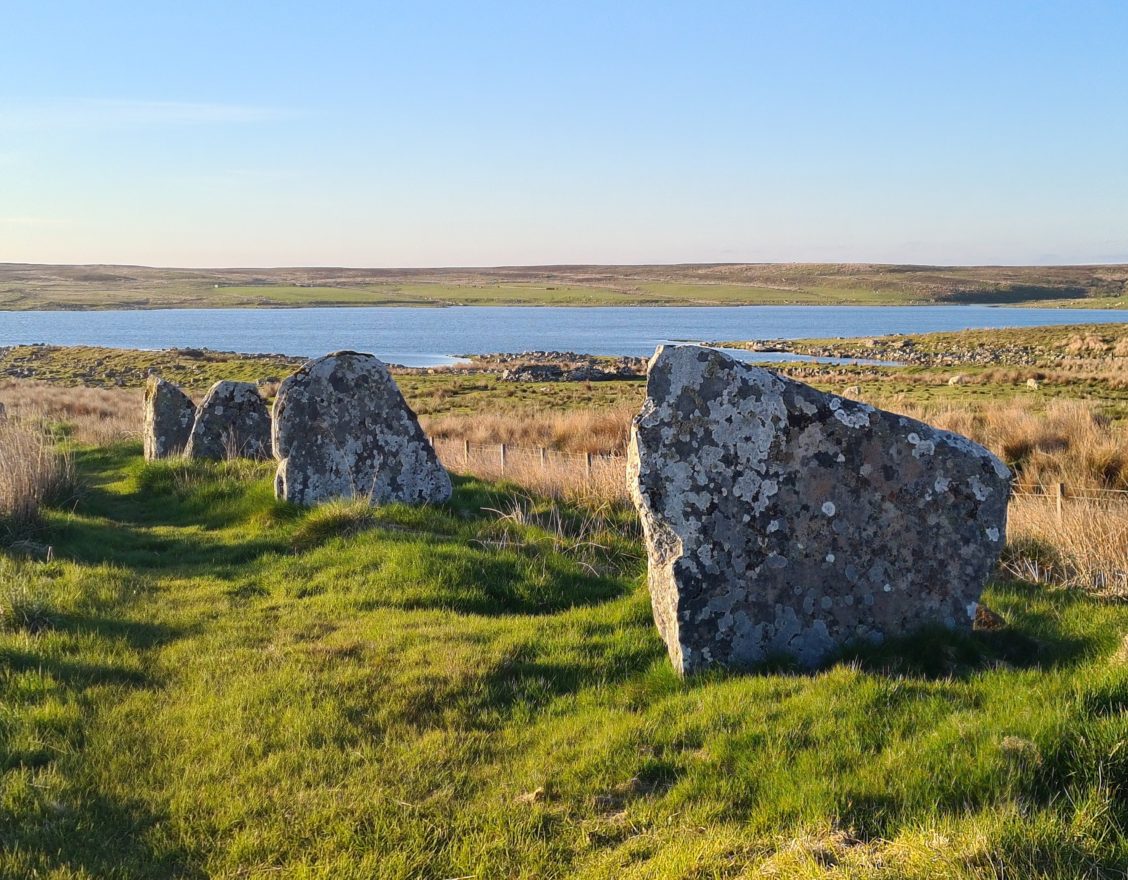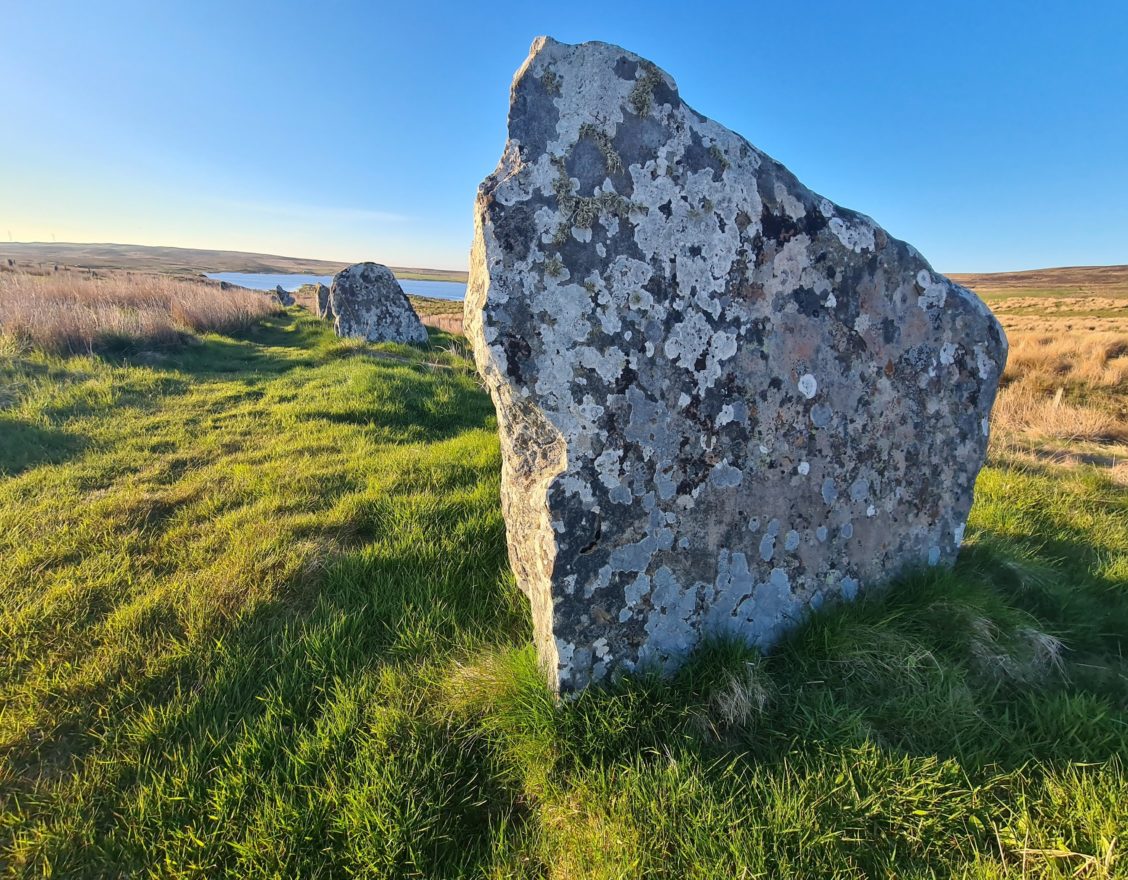Achavanich
A unique setting of 36 standing stones in a horseshoe alignment, mysteriously placed within a landscape of earlier burial monuments. Thought to have been constructed around 4,000 years ago, the short walk around the site’s perimeter gives extensive views of the surrounding moorland and Mt Morven to the south.
what3words Location
Distance
- Approx. 0.5km round trip, including Neolithic cairn.
Parking
- Layby at side of road near site.
Accessibility
- Boots/wellies recommended, ground uneven in places.
- Uneven grass track surrounding monument.
Additional Information
Achavanich, or Achkinloch, is a unique site: unusually for stone settings in Britain, the stones face the direction of the alignment, rather than towards the centre. Few parallels are known, although the site is sometimes compared to that at Broubster, near to Loch Calder. At Achavanich, 36 of the original 54 stones still stand, with the tallest around 2m in height.
The purpose of this monument is unclear, but it may have served a ceremonial or social function in Bronze Age society. Some smaller upright slabs set against the larger stones on the northern and eastern sides may be the remains of cist burials, which were probably added after monument fell out of use.
Nearby the stones to the southeast is an earlier Neolithic round cairn, with traces of its central chamber still visible. Later cist burials from the Bronze Age are also found in the vicinity, including some that were cut directly into the bedrock. Loch Rangag Broch is directly to the west.
You can find out more about Achavanich, as well as other archaeological and historical sites, on Canmore, Scotland’s historic environment record.

Did You Know?
At 4,000 years old, Achavanich is relatively young in comparison to the earlier Neolithic burials scattered across the surrounding landscape! But a contemporary cist burial, containing a Beaker pottery vessel and known as ‘Ava’, has been the subject of a recent research project to reconstruct the identity of a young woman who lived here (see Achavanich Beaker Burial Project for more information).

